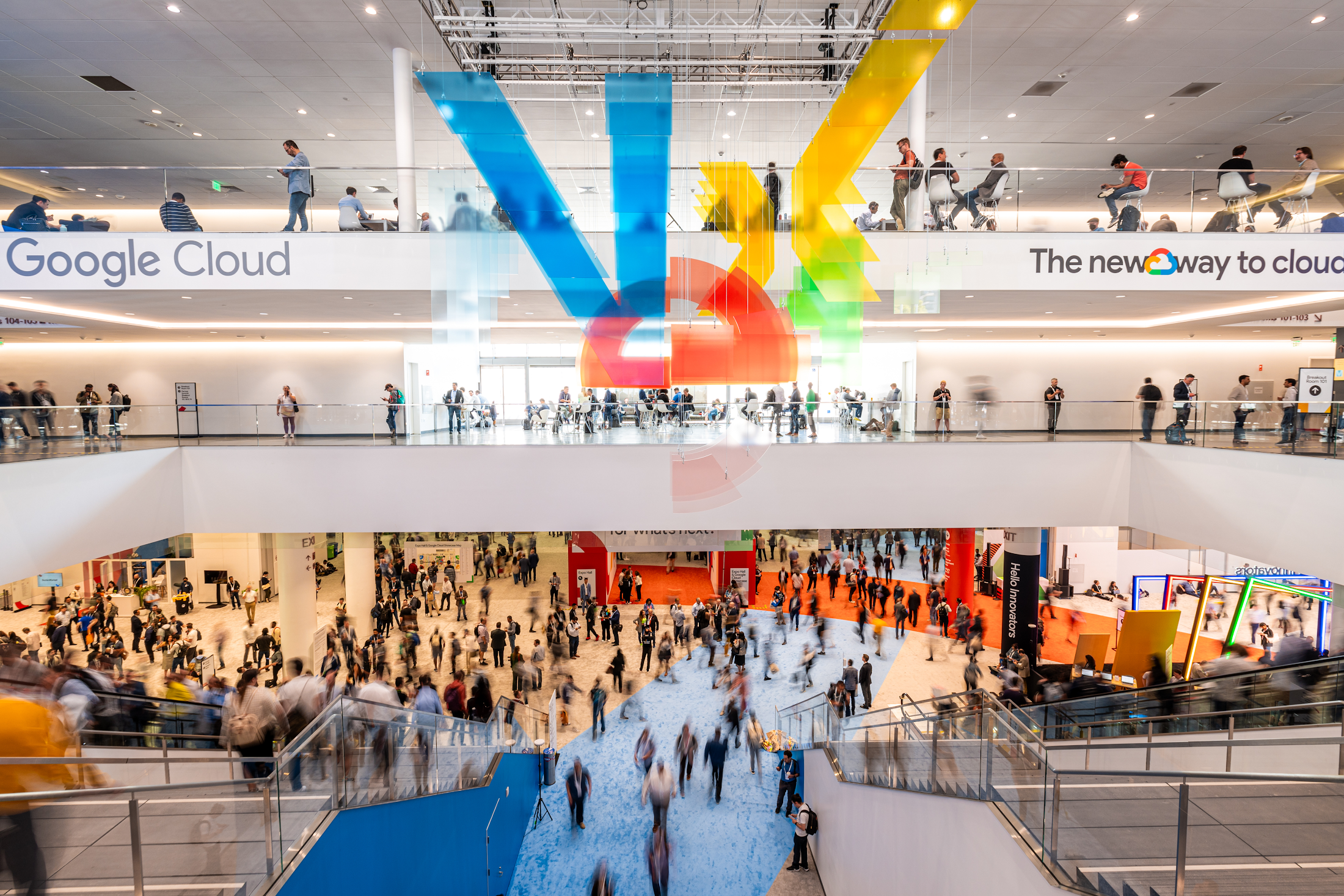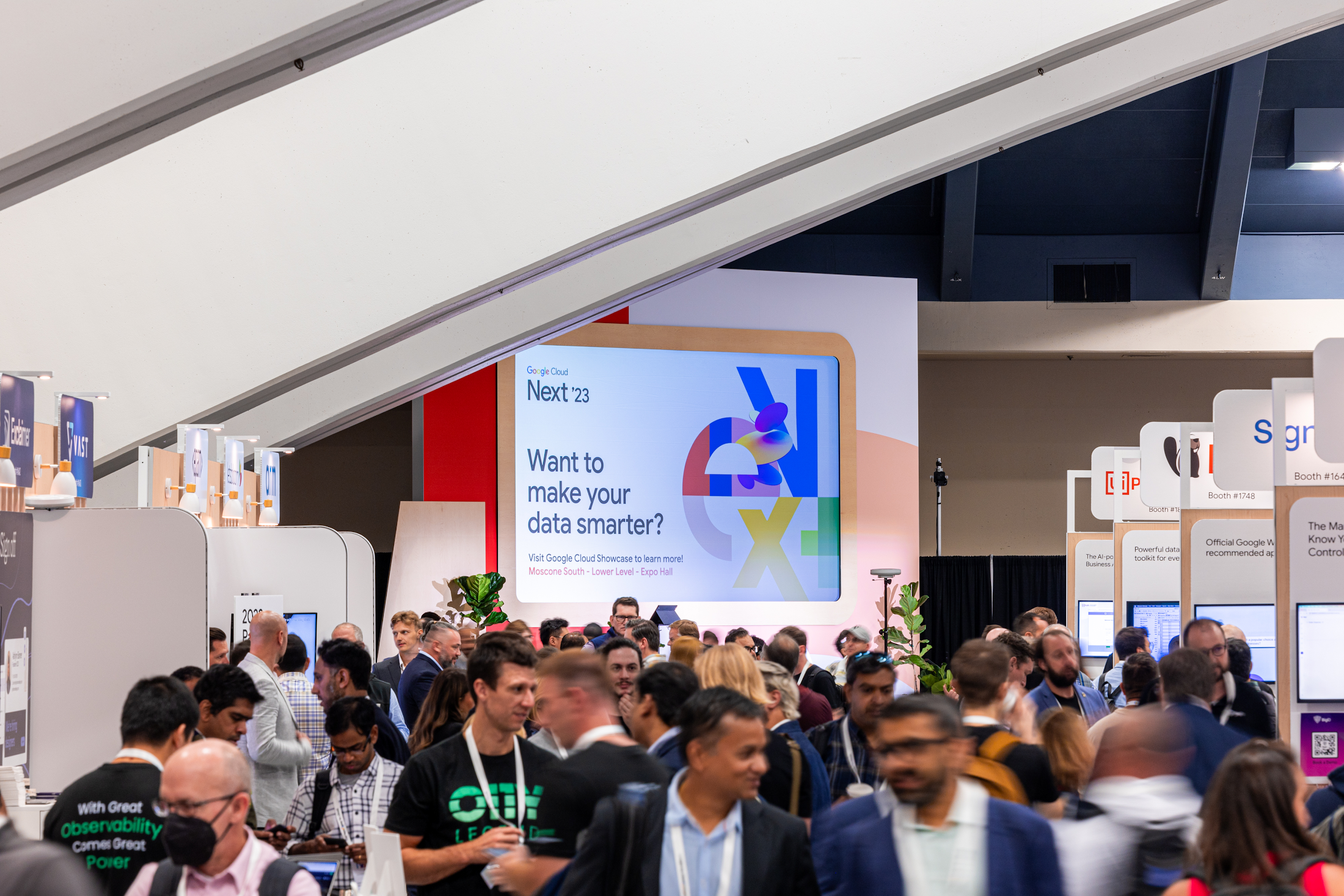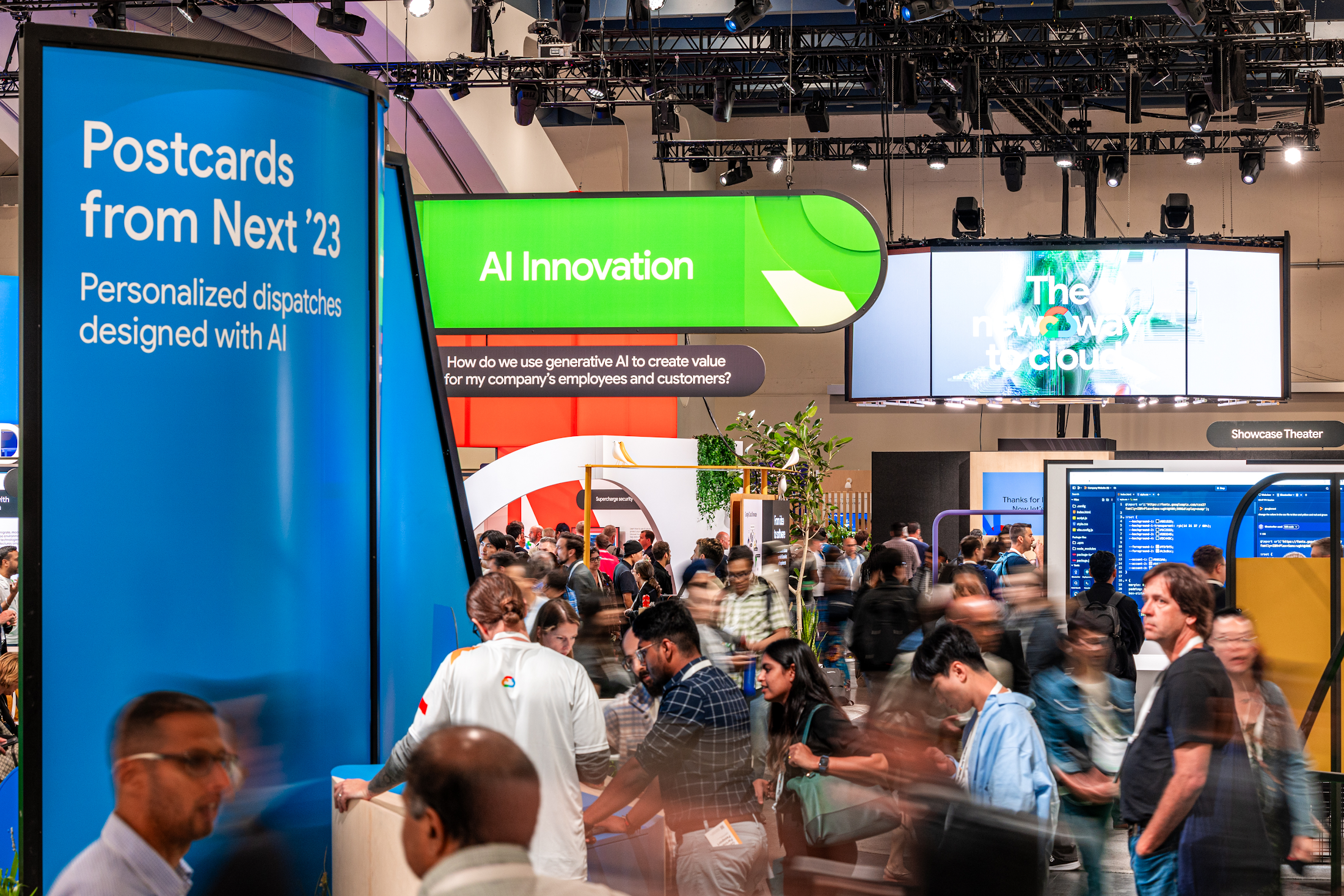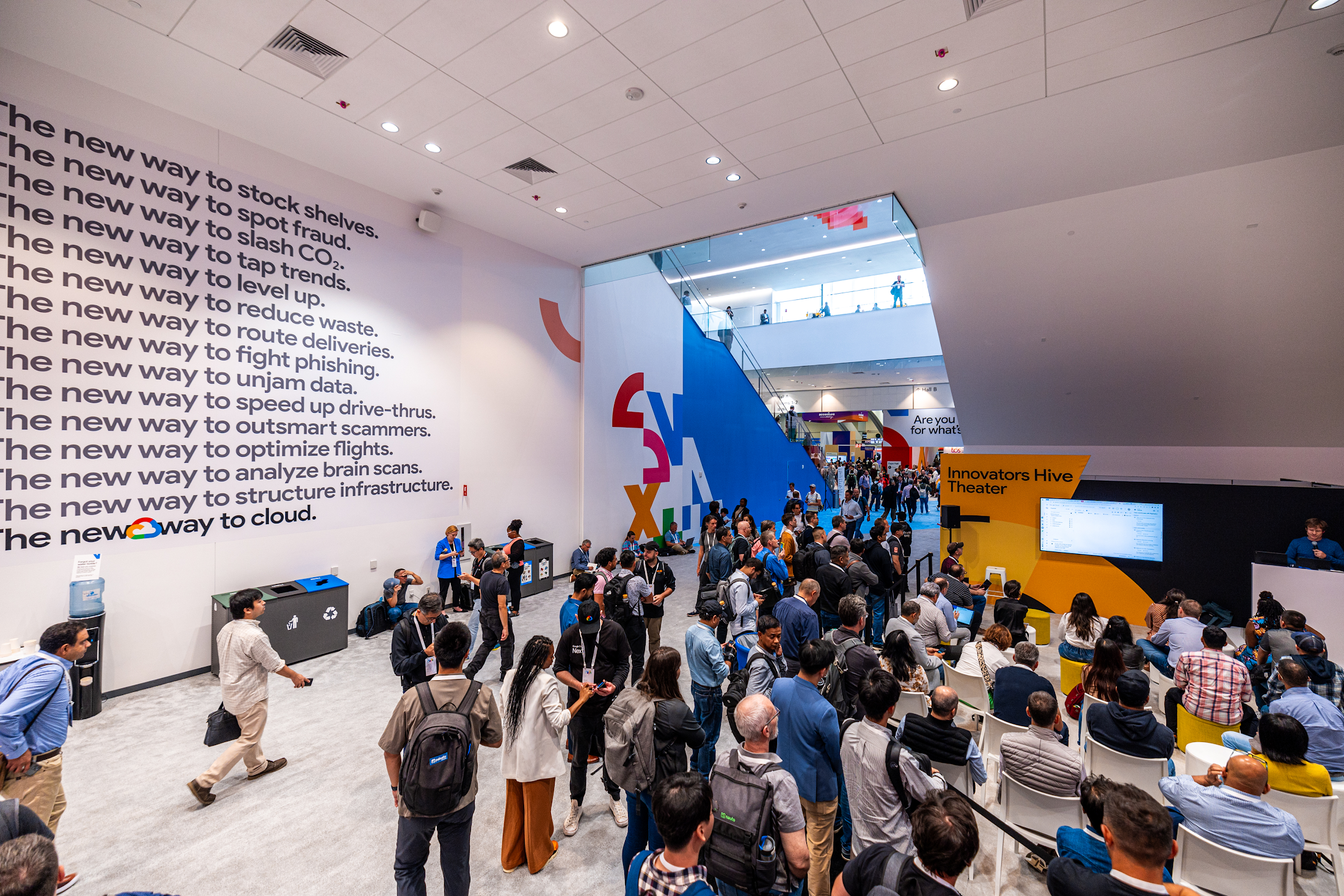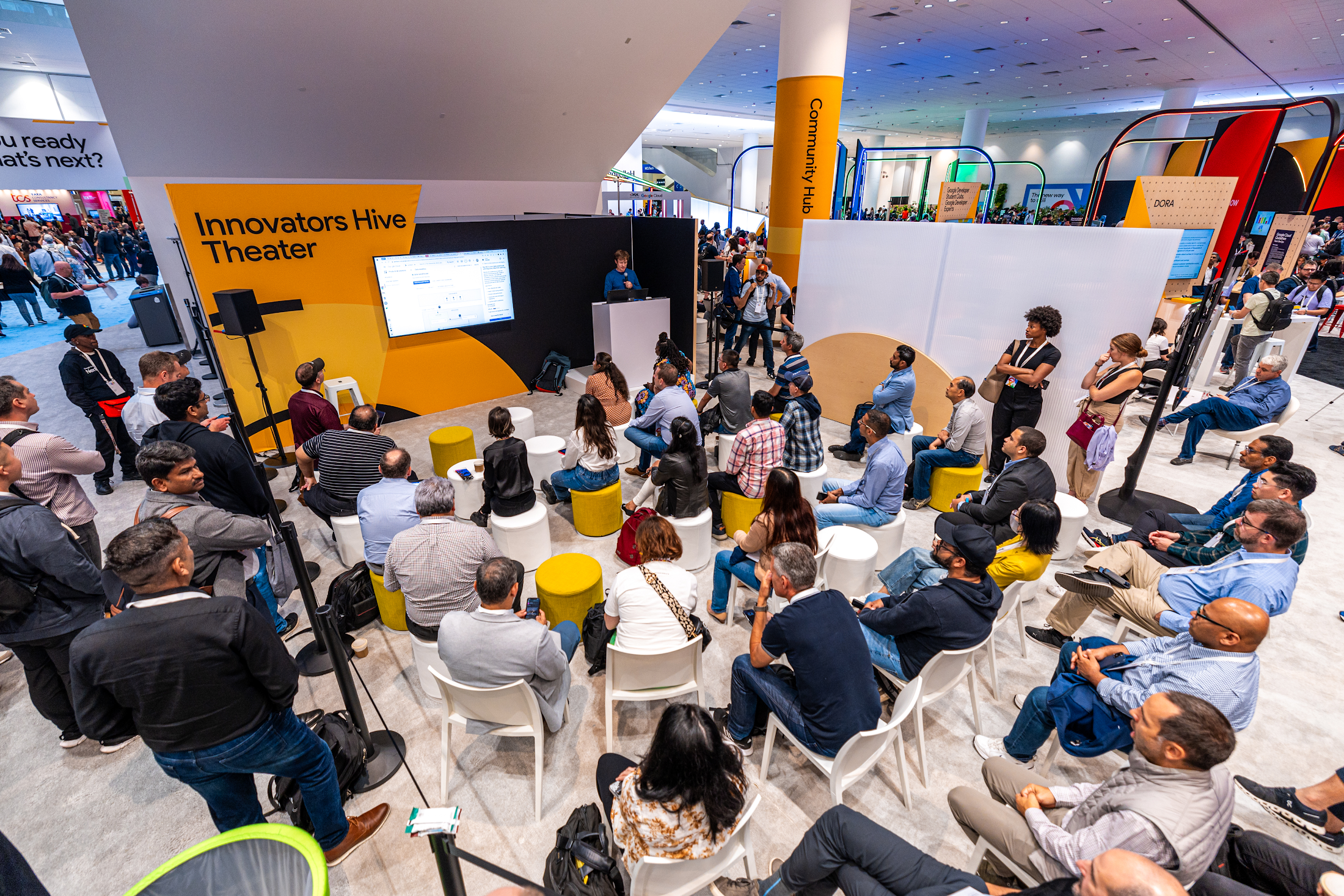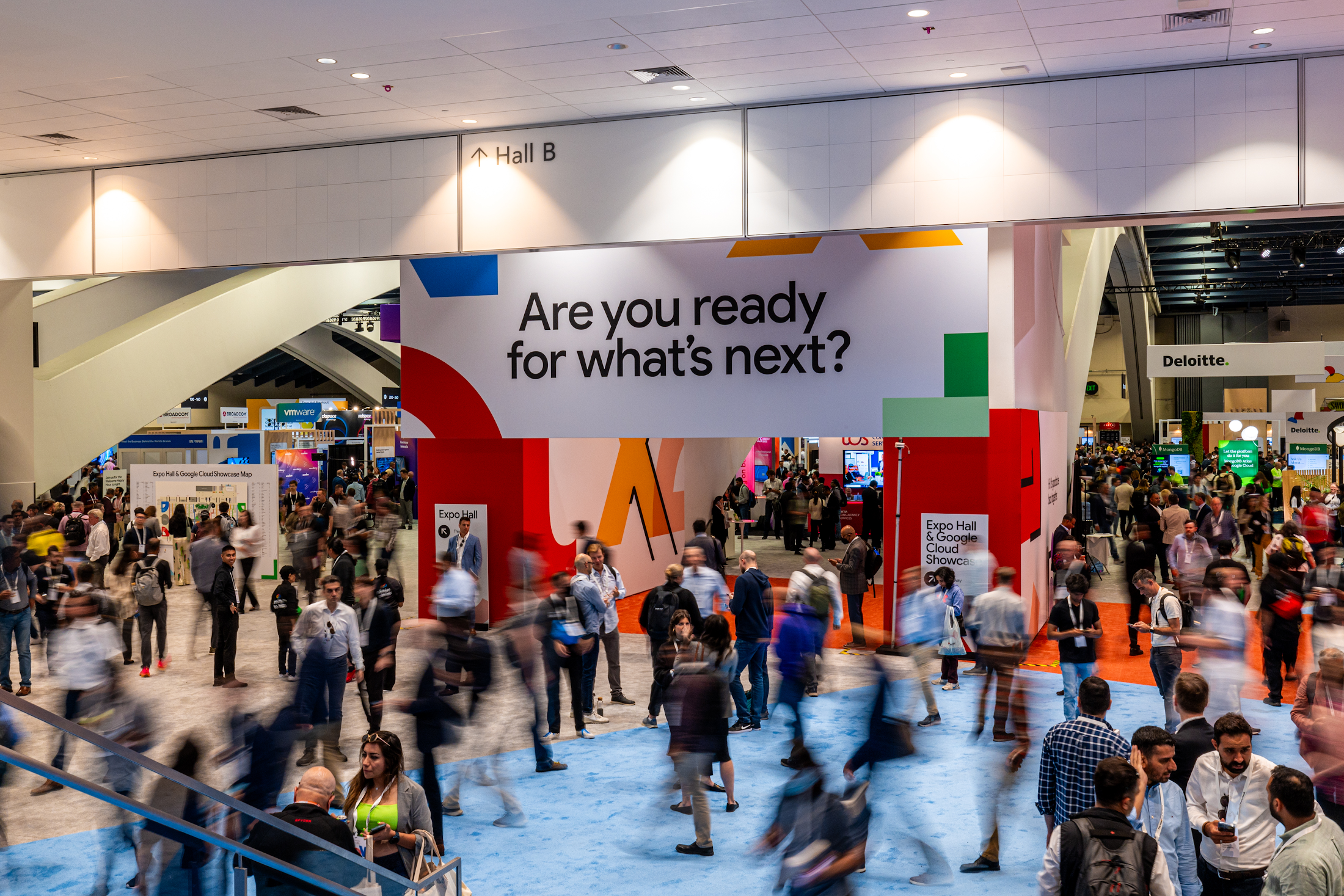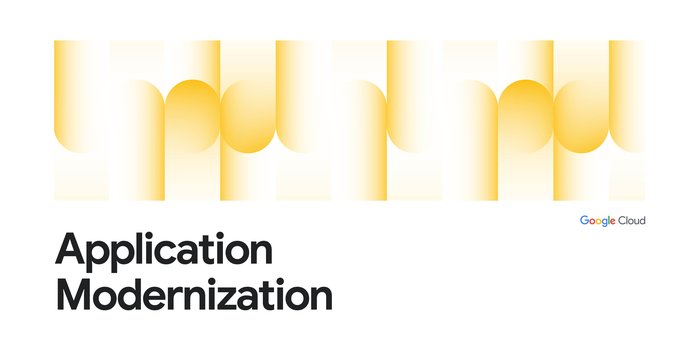Day 2 at Next ‘23: Developer love, infrastructure spotlights, and more
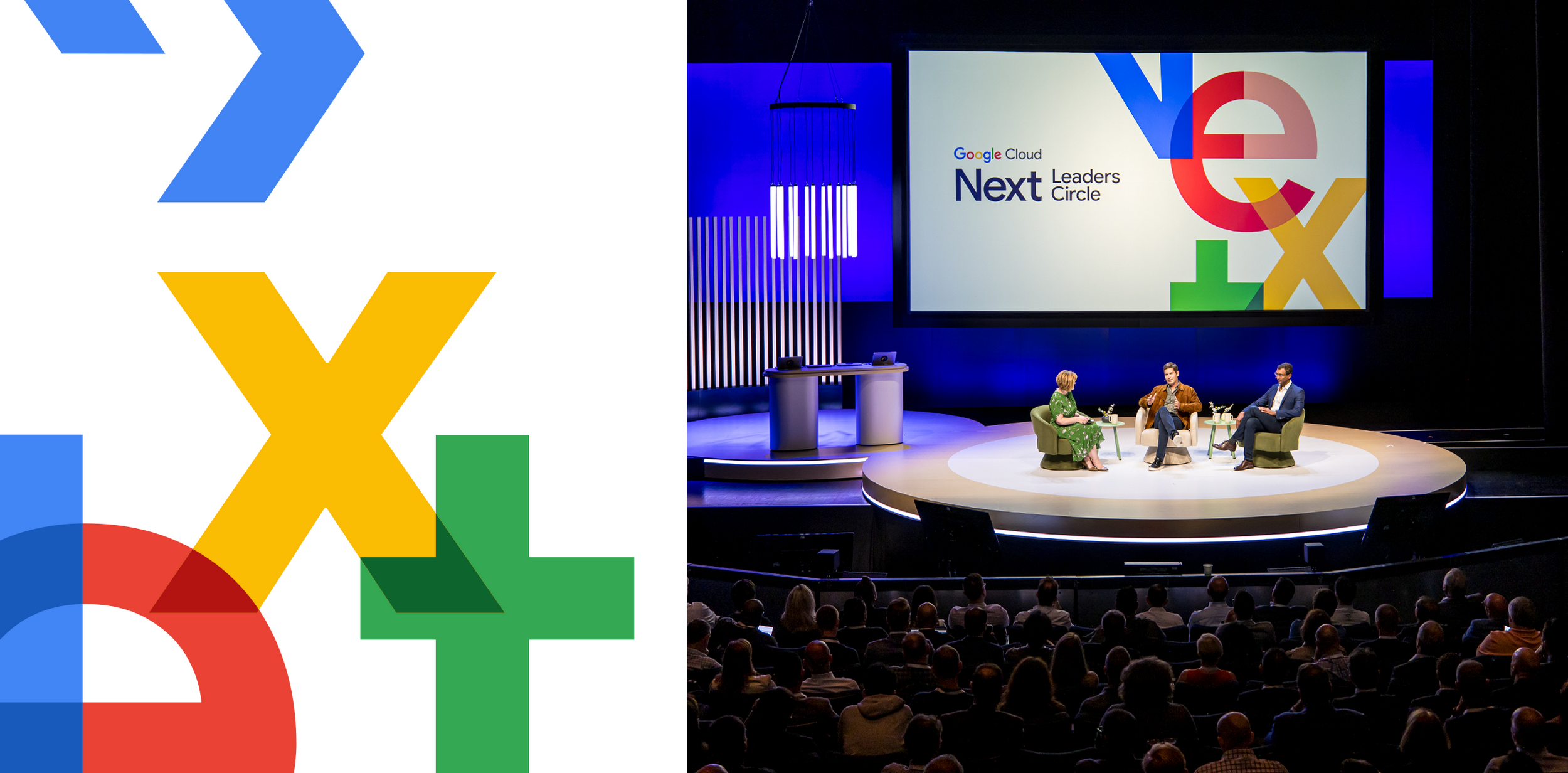
Google Cloud Content & Editorial
Two days down, half a day to go. We hope you’re enjoying Google Cloud Next as much as we are. Today was another busy day, headlined by the ever-popular developer keynote, plus eight Spotlight sessions, not to mention all the breakout sessions, trainings, etc.
So much happened, but here’s the TL;DR of what we talked about during today’s keynotes and spotlights.
Developer love
Day two of tech conferences is traditionally reserved for the developer keynote, but there was nothing traditional about today’s first session. Here, co-hosts Richard Seroter and Forrest Brazeal took the audience on a nostalgic, musical romp through developers’ past (Legacy Land), while providing exciting sneak peaks into a more helpful, AI-infused future. With the help of lots of Champion Innovator friends, Google engineering luminaries, and some special musical guests, they challenged our assumptions, while celebrating everything that came before. If you missed the keynote (or just want to watch it again), it will be available on Thursday on-demand.
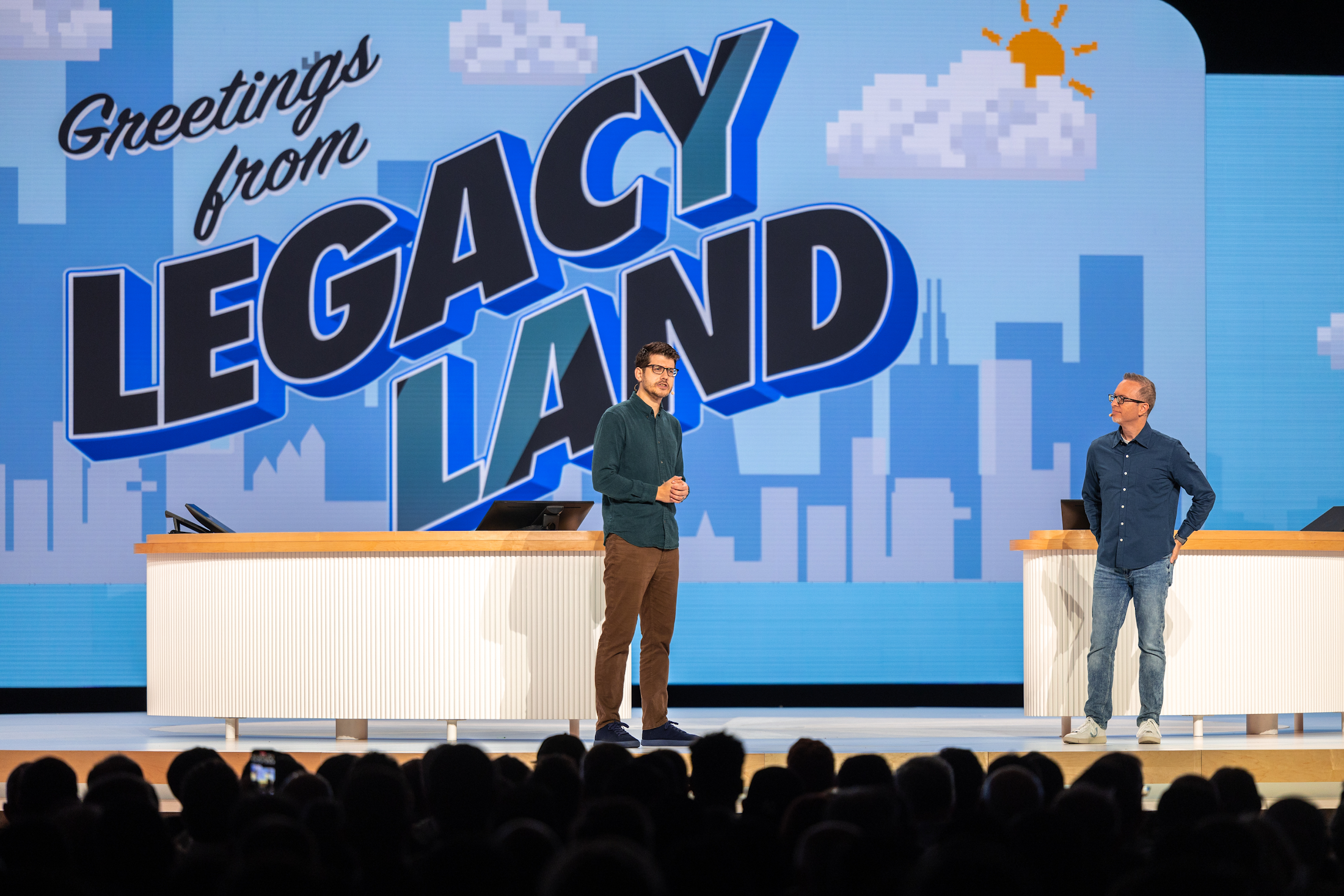

What we announced:
Need to get your application up fast? Our Jump Start Solutions application and infrastructure solutions, now GA, streamline your introduction to Google Cloud by shifting many of the tasks at the initial learning and researching phase down to the platform.
We partnered with GitLab to offer a secure DevOps solution that can shift the work to connect our technologies down to the platform while giving you integrated source management, artifact management, CI/CD, and enhanced security features.
Application Integration – a no-code integration platform as a service (iPaaS) designed to empower you to weave together your applications — is now GA.
Platform engineers and operators, get excited for GKE Enterprise, which stands to be a game-changer for organizations that want to standardize on Google Kubernetes Engine across teams and clusters. New multi-cluster feature (“fleets”) capabilities let platform engineers easily group similar workloads into dedicated clusters, apply custom configurations and policy guardrails per fleet, isolate sensitive workloads, and even delegate cluster management to other teams. Oh, and Duet AI in GKE is in preview too, trained on GKE documentation and standing by to help you with all your tough operational tasks.
A peek behind the infrastructure curtain
In their Spotlight, Sachin Gupta, VP/GM Infrastructure and Solutions Group and Mark Lohmeyer, VP/GM Compute and ML Infrastructure, took the stage to show off some of the latest advancements we’ve made across our infrastructure offerings.
What we announced:
The C3 family is getting bigger and better. This week, we welcomed the C3A powered by AmpereOne processors, the preview of C3D VMs based on 4th Generation AMD EPYC™ Processors, and unveiled that the C3 VM now supports Hyperdisk Extreme block storage in preview, which delivers an impressive 500K IOPS — the fastest by at least 25% higher per instance IOPS than leading cloud hyperscalers.
We also talked publicly about Titanium, a system of purpose-built, custom silicon and multiple tiers of offloads that enables offerings like Hyperdisk and our 3rd generation C3 VMs — with more on the way. “Going forward, look for the Titanium architecture to underpin all future generations of our infrastructure offerings, in the process enabling new classes of infrastructure capabilities that move well beyond the confines of a single server,” we wrote in the launch blog.
Taking data up a level
If day one of Next ‘23 was all about AI, day two had something to say about how to get started with AI in the data tools that you already know and love: BigQuery and Looker.
What we announced:
Now you can access Vertex AI foundation models directly from BigQuery. What does that mean? Starting with the first supported foundation model, text analysis via PaLM 2, you can write just a few lines of SQL in BigQuery ML and start analyzing unstructured data for advanced text processing tasks such as summarization or sentiment analysis, retrieve results in a structured format, and use it with other data for further analysis.
Duet AI in Looker is now in preview, with the plan to have you “talk to your data” and have it create entire reports or advanced visualizations, Google Slides presentations — even formulas for calculated fields and LookML code. Looker is also planning to get more embedded in the ecosystem, with integrations to Tableau in preview, Microsoft Power BI in GA, as well as Alteryx Designer Cloud and Sisu Data.
Speaking of ecosystems, the Google Maps Platform announced a suite of Environment APIs for solar, air quality, and pollen. Overlaying environment data on 3D imagery is just one way these products can work together to map our way to a healthier planet.
And that’s just the tip of the iceberg. There are still dozens of sessions tomorrow, including repeats of some popular Spotlights. Be sure to check out the updated session library for details.
For everyone in San Francisco, we hope you have fun at the party tonight. And for everyone who couldn’t make it, we’ve got you handled — you can register at no cost to experience breakouts, spotlights, and digital-only content on-demand. Enjoy!
